Introduction
The landscape of software development has undergone a seismic shift with the integration of artificial intelligence. What was once considered futuristic is now an essential component of a developer’s toolkit. As we navigate through 2025, AI-powered development tools have evolved from mere curiosities to indispensable assets that significantly enhance productivity, reduce debugging time, and enable developers to focus on creative problem-solving rather than repetitive coding tasks.
The acceleration of AI capabilities has been nothing short of remarkable. Just a few years ago, AI assistants could only offer basic code completion and simple refactoring suggestions. Today, they can generate entire functions, debug complex algorithms, optimize performance bottlenecks, and even architect system designs based on natural language descriptions. This rapid evolution has fundamentally changed how developers approach their craft, with studies showing that teams leveraging AI tools can deliver projects up to 40% faster than those relying solely on traditional development methods.
For developers looking to maintain their competitive edge in this dynamic landscape, staying updated on the latest AI tools is no longer optional—it’s a professional necessity. The right AI tools can dramatically improve code quality, reduce technical debt, and allow teams to innovate at unprecedented speeds. However, with the proliferation of options available, identifying which tools truly deserve a place in your workflow can be overwhelming.
This comprehensive guide aims to cut through the noise and highlight the 15 most impactful AI tools that developers should be leveraging in 2025. Whether you’re a seasoned professional or just beginning your coding journey, these tools represent the cutting edge of AI-assisted development and can significantly enhance your capabilities across various programming disciplines. From intelligent code completion to automated documentation generation, from semantic code search to predictive testing, we’ll explore how these advanced tools can unlock new levels of efficiency and creativity in your development process.
Top 15 AI Tools for Developers in 2025
1. GitHub Copilot X
Description: GitHub Copilot X represents the next generation of AI pair programming, building upon the foundation laid by its predecessor. This advanced version incorporates multimodal AI capabilities, allowing it to understand and generate code based on a combination of natural language instructions, existing codebase context, and even visual elements like wireframes or diagrams.
Key Features:
- Advanced context-aware code generation across all major programming languages
- Integrated explanation system that can describe complex code blocks in plain English
- In-editor AI chat for real-time coding assistance and troubleshooting
- Automatic test generation based on implementation code
- Cross-file awareness that understands your entire project structure
- Refactoring suggestions that improve code quality and performance
Pros and Cons:
✅ Exceptional context awareness across large codebases
✅ Significantly reduces time spent on boilerplate code
✅ Powerful integration with GitHub ecosystem
✅ Continuous learning from your coding patterns
❌ Subscription cost can be significant for individual developers
❌ Occasionally generates outdated or insecure code patterns
❌ Requires high-speed internet connection for optimal performance
❌ Some privacy concerns regarding code analysis
Use Cases: GitHub Copilot X excels when developers need to quickly implement complex functionality within an existing codebase. It’s particularly valuable for navigating unfamiliar frameworks or libraries, rapidly prototyping new features, and automating routine coding tasks. Many developers report that Copilot X’s ability to generate boilerplate code alone saves them several hours each week, while its more advanced capabilities help solve challenging algorithmic problems significantly faster.
Official Link: GitHub Copilot X
2. OpenAI Codex CLI
Description: OpenAI Codex CLI brings the power of large language models directly to your command line interface. This tool transforms natural language instructions into terminal commands, scripts, and even complete programs, making it an invaluable resource for developers who frequently work in terminal environments.
Key Features:
- Natural language to command translation for all major operating systems
- Script generation for automation tasks from simple descriptions
- Built-in safeguards to prevent execution of potentially harmful commands
- Interactive mode that allows iterative refinement of generated scripts
- Command history analysis to suggest optimizations for frequently used operations
- Cross-platform compatibility with intelligent adaptations for OS-specific commands
Pros and Cons:
✅ Dramatically simplifies command-line operations
✅ Robust safety mechanisms prevent dangerous commands
✅ Excellent for learning complex CLI operations
✅ Supports multiple shells and operating systems
❌ Sometimes requires refinement of natural language input
❌ May struggle with highly specialized or niche CLI tools
❌ Premium features require paid subscription
❌ Performance can degrade with very complex command chains
Use Cases: Codex CLI shines in system administration tasks, DevOps workflows, and data processing pipelines. It allows developers to execute complex sequences of commands without having to remember exact syntax or flag options. For example, a developer can simply type “find all Python files modified in the last week and move them to a backup directory” and receive a fully functional command that accomplishes this task. This tool is particularly valuable for developers transitioning between different environments or working with unfamiliar command-line tools.
Official Link: OpenAI Codex CLI
3. Cursor AI
Description: Cursor AI is a purpose-built code editor that deeply integrates AI capabilities into every aspect of the development experience. Unlike traditional IDEs with AI plugins, Cursor was designed from the ground up to leverage artificial intelligence throughout the entire development workflow.
Key Features:
- AI-powered code navigation that understands semantic relationships between code elements
- Contextual code generation based on project-wide understanding
- Intelligent code review that suggests improvements and identifies potential bugs
- Natural language search across entire codebases (“find where user authentication happens”)
- Automatic documentation generation for functions, classes, and modules
- Integrated chat interface for explaining code concepts and troubleshooting issues
Pros and Cons:
✅ Purpose-built editor optimized for AI collaboration
✅ Superior semantic understanding of codebases
✅ Excellent natural language search capabilities
✅ Regular updates with cutting-edge AI features
❌ Switching from established IDEs requires adjustment period
❌ Some features require cloud connection
❌ Resource-intensive for very large projects
❌ Limited plugin ecosystem compared to established IDEs
Use Cases: Cursor AI is particularly valuable for developers working on large, complex projects where navigating and understanding the codebase is challenging. Its ability to semantically search through code and explain relationships between components makes it easier to onboard new team members and maintain legacy systems. The integrated AI assistant can help developers understand unfamiliar code patterns and libraries, making it an excellent tool for learning new technologies or frameworks.
Official Link: Cursor AI
4. Claude for Developers
Description: Claude for Developers is Anthropic’s specialized AI assistant tailored specifically for software engineering tasks. Building on the foundation of Claude’s general capabilities, this variant has been fine-tuned on extensive programming datasets and incorporates specialized knowledge about software development best practices, design patterns, and system architecture.
Key Features:
- Conversational programming assistance with deep context understanding
- Advanced code explanation capabilities for complex algorithms and systems
- Language-agnostic development support spanning over 40 programming languages
- Architectural guidance for system design and optimization
- Security vulnerability detection and mitigation recommendations
- Integration capabilities with popular IDEs and development environments
Pros and Cons:
✅ Exceptional at explaining complex code and concepts
✅ Strong reasoning abilities for architectural decisions
✅ Sophisticated understanding of software engineering principles
✅ Helpful for both beginners and experienced developers
❌ Premium features require subscription
❌ API integration can be complex for custom workflows
❌ Occasional hallucinations with highly specialized frameworks
❌ May require careful prompt engineering for optimal results
Use Cases: Claude for Developers excels as a programming mentor and consultant, providing thoughtful explanations of complex code patterns and offering architectural guidance for challenging problems. It’s particularly valuable for projects requiring careful consideration of design tradeoffs, performance optimizations, or security implications. Many development teams use Claude as a virtual senior developer who can provide insights on best practices, review architectural decisions, and help resolve difficult bugs.
Official Link: Claude for Developers
5. Windsurf
Description: Windsurf represents a significant advancement in AI-powered code transformation tools. Focused specifically on legacy code modernization, Windsurf can analyze outdated codebases and automatically refactor them to use modern language features, libraries, and design patterns.
Key Features:
- Automated migration of codebases between language versions (e.g., Python 2 to 3, Java 8 to 17)
- Library dependency modernization and replacement
- Architectural pattern transformations (e.g., converting monoliths to microservices)
- Technical debt identification and prioritized remediation
- Performance optimization through modern language features
- Comprehensive documentation of all transformations with explanation of benefits
Pros and Cons:
✅ Dramatically accelerates legacy code modernization
✅ Reduces risk in version migration projects
✅ Excellent documentation of all transformations
✅ Handles complex dependencies elegantly
❌ Enterprise pricing model can be costly for smaller teams
❌ Complex architectural transformations still require human oversight
❌ Learning curve for configuration on complex projects
❌ Limited support for certain niche languages and frameworks
Use Cases: Windsurf is invaluable for teams maintaining legacy systems that need modernization. It can dramatically reduce the time and risk associated with upgrading outdated codebases, allowing organizations to benefit from modern language features and security improvements without complete rewrites. Development teams often use Windsurf to incrementally modernize their codebases, focusing human effort on the most critical architectural decisions while automating routine upgrades.
Official Link: Windsurf
6. Google Firebase Studio
Description: Google Firebase Studio combines the power of Firebase’s cloud services with advanced AI capabilities to streamline application development and deployment. This integrated environment allows developers to design, build, test, and deploy applications with significant portions of the backend logic being generated and optimized by AI.
Key Features:
- AI-powered database schema design and optimization
- Automatic generation of security rules based on natural language descriptions
- Intelligent traffic analysis and serverless function scaling
- Predictive performance optimization for cloud functions
- Natural language interface for querying analytics data
- Automated testing of critical application paths
Pros and Cons:
✅ Deep integration with Google Cloud ecosystem
✅ Exceptional database schema optimization
✅ Intuitive natural language interface for complex operations
✅ Proactive performance suggestions based on usage patterns
❌ Vendor lock-in to Google ecosystem
❌ Free tier limitations can lead to unexpected costs
❌ Steeper learning curve for non-Firebase developers
❌ Some advanced features require enterprise pricing
Use Cases: Firebase Studio particularly benefits developers working on data-heavy applications with complex backend requirements. It excels at rapidly prototyping applications with sophisticated authentication flows, complex database requirements, and scalable cloud functions. The AI capabilities help developers identify potential performance bottlenecks before they become problems and suggest optimizations for database queries and serverless functions based on actual usage patterns.
Official Link: Google Firebase Studio
7. Replit Ghostwriter
Description: Replit Ghostwriter brings collaborative AI-powered development to Replit’s browser-based coding environment. This tool combines code generation capabilities with contextual awareness of your project and integrates seamlessly with Replit’s collaborative features.
Key Features:
- Real-time collaborative AI code assistance
- Complete function generation from docstring descriptions
- Automated debugging and error resolution
- Interactive tutorials that adapt to your coding style
- Natural language interface for common development tasks
- One-click deployment with AI-optimized configurations
Pros and Cons:
✅ Superior collaborative coding experience
✅ Browser-based accessibility from any device
✅ Excellent for educational settings and pair programming
✅ No local setup required for complex environments
❌ Performance limitations with very large projects
❌ Internet dependency can impact development workflow
❌ Monthly subscription required for premium features
❌ Some advanced IDE features still in development
Use Cases: Ghostwriter is particularly valuable for educational settings, team collaborations, and rapid prototyping. Its browser-based nature makes it accessible from any device, while the collaborative features allow multiple developers to benefit from AI assistance simultaneously. Educators use Ghostwriter to provide personalized guidance to students, while development teams leverage it for collaborative problem-solving sessions and interview processes.
Official Link: Replit Ghostwriter
8. AWS CodeWhisperer
Description: AWS CodeWhisperer is Amazon’s AI coding companion, specialized in cloud-native development and AWS service integration. It helps developers write secure, efficient code that leverages AWS services effectively and follows best practices for cloud architecture.
Key Features:
- Specialized knowledge of AWS services and APIs
- Security-focused code generation with automated vulnerability scanning
- Infrastructure-as-code generation for AWS resources
- Cost optimization suggestions for cloud resource utilization
- Serverless application pattern implementations
- Compliance checking against organizational policies
Pros and Cons:
✅ Unmatched AWS service integration knowledge
✅ Substantial cost savings through optimization suggestions
✅ Strong security and compliance focus
✅ Free tier available for AWS customers
❌ Limited utility outside of AWS ecosystem
❌ Sometimes prioritizes AWS services over alternatives
❌ Advanced features require significant AWS investment
❌ Learning curve for developers new to cloud architecture
Use Cases: CodeWhisperer is the tool of choice for developers working extensively with AWS services. It excels at helping developers implement cloud-native patterns correctly, navigate the complexities of AWS service configurations, and ensure their code follows security best practices. It’s particularly valuable when implementing serverless architectures, designing resilient cloud systems, and optimizing cloud resource utilization to manage costs effectively.
Official Link: AWS CodeWhisperer
9. AugmentCode
Description: AugmentCode represents a new category of AI development tools focused on code augmentation rather than just generation. This tool specializes in analyzing existing codebases to identify opportunities for improvement, enhancement, and optimization.
Key Features:
- Automated performance optimization suggestions
- Code modernization recommendations
- Technical debt identification and prioritization
- Architecture pattern recognition and enhancement
- Language-specific idiom and best practice suggestions
- Integration with CI/CD pipelines for continuous code improvement
Pros and Cons:
✅ Focuses on improving existing code rather than replacement
✅ Excellent technical debt prioritization
✅ Seamless CI/CD pipeline integration
✅ Clear ROI through performance improvements
❌ Best results require significant historical codebase data
❌ Premium features require enterprise subscription
❌ Setup complexity for large, multi-repository projects
❌ Some recommendations require deep architectural knowledge
Use Cases: AugmentCode is invaluable for maintaining and improving large-scale production systems. Rather than generating new code from scratch, it helps developers enhance their existing codebases through targeted recommendations. Development teams use AugmentCode to systematically reduce technical debt, improve performance bottlenecks, and modernize legacy sections of their applications. It’s particularly effective when integrated into continuous integration pipelines, providing ongoing suggestions as the codebase evolves.
Official Link: AugmentCode
10. Tabnine AI Code Completion
Description: Tabnine has evolved from a simple code completion tool to a comprehensive AI development assistant. Using advanced machine learning models trained on billions of lines of code, Tabnine provides context-aware suggestions that go beyond simple autocomplete to understand the intent behind your code.
Key Features:
- Ultra-fast code completion with minimal latency
- Team-specific models that learn from your codebase
- Multi-line code generation for common patterns
- Privacy-focused operation with optional local-only processing
- Language-specific idiom suggestions
- Integration with all major IDEs and code editors
Pros and Cons:
✅ Industry-leading response speed and low latency
✅ Strong privacy focus with local processing options
✅ Team learning captures organizational knowledge
✅ Excellent IDE integration ecosystem
❌ Less powerful for complex reasoning tasks
❌ Team-specific models require substantial training data
❌ Advanced features require paid subscription
❌ Setup complexity for on-premises deployment
Use Cases: Tabnine excels at accelerating day-to-day coding tasks through intelligent completion that anticipates your needs based on context. It’s particularly valuable for teams that want to maintain consistent coding patterns across their organization and for developers who prioritize privacy and control over their code data. Many organizations use Tabnine’s team learning capabilities to capture and share institutional knowledge about their codebases through AI-powered suggestions.
Official Link: Tabnine AI Code Completion
11. DeepCode AI
Description: DeepCode AI moves beyond traditional static code analysis by using deep learning techniques to understand code semantics and identify complex bugs, security vulnerabilities, and performance issues that conventional tools miss.
Key Features:
- Semantic code analysis that understands program intent
- Detection of subtle logical errors and edge cases
- Prioritized vulnerability reporting with exploitation risk assessment
- Concrete fix suggestions with explanations
- Integration with issue trackers and CI/CD pipelines
- Language-agnostic analysis capabilities
Pros and Cons:
✅ Detects complex bugs that other tools miss
✅ Excellent security vulnerability detection
✅ Concrete fix suggestions save debugging time
✅ Seamless integration with development workflows
❌ False positive rate higher than traditional linters
❌ Full analysis can be time-consuming on large codebases
❌ Advanced features limited to enterprise tier
❌ Some language support still in beta phase
Use Cases: DeepCode AI is essential for projects where code quality and security are paramount. It identifies issues that would be difficult to find through manual code review or traditional static analyzers, such as complex race conditions, security vulnerabilities with specific exploitation paths, and logical errors in error handling. Development teams integrate DeepCode into their review processes to catch subtle bugs before they reach production and to systematically improve their codebase security posture.
Official Link: DeepCode AI
12. Mintlify DocWriter
Description: Mintlify DocWriter automates the creation and maintenance of technical documentation by analyzing codebases and generating comprehensive, accurate documentation that stays in sync with code changes.
Key Features:
- Automatic documentation generation for functions, classes, and APIs
- Natural language explanation of complex code sections
- Interactive code examples that remain synchronized with implementation
- Documentation gap analysis and prioritization
- Integration with version control systems to track documentation updates
- Support for multiple documentation formats and platforms
Pros and Cons:
✅ Eliminates documentation maintenance burden
✅ Excellent for API documentation and developer guides
✅ Documentation stays synchronized with code changes
✅ Supports multiple documentation frameworks and formats
❌ Sometimes requires human editing for perfect tone
❌ Complex setup for legacy documentation migration
❌ Advanced features require premium subscription
❌ Limited customization in free tier
Use Cases: DocWriter addresses one of the most persistent challenges in software development: maintaining accurate and comprehensive documentation. It’s particularly valuable for teams working on APIs, libraries, or frameworks that require clear documentation for external users. By automatically generating and updating documentation as code changes, DocWriter ensures that documentation remains accurate and reduces the burden on developers to manually maintain documentation alongside their code.
Official Link: Mintlify DocWriter
13. Warp Terminal
Description: Warp Terminal reinvents the command-line interface with AI-powered capabilities that make terminal interactions more intuitive and efficient. This modern terminal combines the power of traditional command-line interfaces with intelligent assistance features.
Key Features:
- Natural language command translation and generation
- Contextual command suggestions based on current directory and project
- Automatic error recovery recommendations
- Command history analysis with optimization suggestions
- Collaborative terminal sessions with AI assistance
- Integrated documentation and explanation for complex commands
Pros and Cons:
✅ Modernizes command-line workflow with intuitive interface
✅ Excellent error recovery and troubleshooting
✅ Collaborative features for team terminal sessions
✅ Time-saving command optimization suggestions
❌ Learning curve for terminal power users
❌ Some performance overhead compared to traditional terminals
❌ Advanced features require subscription
❌ Not yet available on all operating systems
Use Cases: Warp Terminal is ideal for developers who spend significant time working in command-line environments. It streamlines common tasks like navigating file systems, running build processes, and managing deployments through intelligent suggestions and natural language capabilities. Developers find it particularly useful when working with unfamiliar command-line tools or complex sequences of operations, as the AI assistant can provide guidance and explanations in plain language.
Official Link: Warp Terminal
14. Sourcery AI
Description: Sourcery AI focuses on code quality improvement through intelligent refactoring suggestions. It analyzes your code in real-time and suggests targeted improvements that align with best practices and design principles.
Key Features:
- Automated refactoring suggestions for cleaner, more maintainable code
- Language-specific style guide enforcement
- Complexity reduction recommendations
- Performance optimization suggestions
- Integration with Git workflows for pre-commit improvements
- Explanation of refactoring benefits for educational purposes
Pros and Cons:
✅ Makes code quality improvements accessible to all developers
✅ Educational explanations build better coding habits
✅ Lightweight integration with existing workflows
✅ Free tier suitable for individual developers
❌ Some advanced refactorings require manual review
❌ Language support varies in depth and quality
❌ Team features require paid subscription
❌ Can be overzealous with stylistic suggestions
Use Cases: Sourcery AI is valuable for maintaining high code quality standards and helping developers improve their coding practices. It’s particularly useful for teams onboarding new members who may not be familiar with project-specific conventions and for maintaining consistent code quality across large codebases. Many developers use Sourcery as a continuous learning tool that helps them write cleaner, more maintainable code through contextual suggestions and explanations.
Official Link: Sourcery AI
15. RunGuard AI
Description: RunGuard AI represents a new generation of security-focused development tools that protect applications during runtime through AI-powered monitoring and intervention. Rather than just identifying vulnerabilities during development, RunGuard actively defends applications against attacks in production environments.
Key Features:
- Real-time attack detection and mitigation
- Automatic vulnerability patching without deployment
- Behavioral analysis to identify suspicious activity
- Zero-day exploit protection
- Detailed security incident reporting
- Minimal performance overhead through targeted monitoring
Pros and Cons:
✅ Shifts security left in the development process
✅ Practical remediation suggestions
✅ Solid CI/CD integration
✅ Available free tier for individual developers
❌ Comprehensive setup required for maximum value
❌ Some false positives require security expertise to evaluate
❌ Advanced compliance features limited to enterprise plans
❌ Performance impact on highly optimized systems
Use Cases: RunGuard AI is essential for applications handling sensitive data or operating in high-risk environments. It provides an additional layer of security that can detect and mitigate attacks even when vulnerabilities exist in the application code. Development teams integrate RunGuard into their applications to provide protection against emerging threats without waiting for traditional patch cycles, significantly reducing the window of vulnerability for production systems.
Official Link: RunGuard AI
Conclusion
As we’ve explored throughout this comprehensive guide, AI tools have fundamentally transformed the software development landscape in 2025. These 15 cutting-edge tools represent the pinnacle of how artificial intelligence can enhance developer productivity, code quality, and creative problem-solving capabilities across the entire development lifecycle.
The most significant shift we’re witnessing is not just in the automation of routine coding tasks—though that benefit remains substantial—but in how these advanced AI systems are becoming true collaborative partners in the development process. Tools like GitHub Copilot X and Claude for Developers don’t simply generate code; they engage in meaningful dialog about architectural decisions, help reason through complex problems, and provide contextual insights that elevate the entire development experience.
For developers looking to maintain their competitive edge in this rapidly evolving landscape, strategic adoption of these AI tools is becoming a necessity rather than a luxury. The productivity gains are too substantial to ignore, with many teams reporting 30-50% increases in development velocity after successfully integrating AI assistants into their workflows. However, the most successful developers are those who view these tools not as replacements for human expertise, but as powerful amplifiers that allow them to focus their creative energy on higher-level challenges.
As you consider which of these tools to incorporate into your own development practice, we encourage you to start with those that address your specific pain points—whether that’s streamlining documentation with Mintlify DocWriter, improving code quality with Sourcery AI, or enhancing security with RunGuard AI. Begin with focused use cases where the benefits are clear and measurable, then gradually expand your AI toolkit as you become more comfortable with these new collaborative workflows.
We’d love to hear about your experiences with these tools and how they’re transforming your development process. Have you already incorporated some of these AI assistants into your workflow? Are there others not on our list that you’ve found valuable? Share your insights in the comments below or join the conversation on social media using #AIDevelopmentTools2025. Your experiences and perspectives will help build a more comprehensive understanding of how these powerful tools are reshaping our industry.
Remember, the goal isn’t to have AI write all your code—it’s to create a synergistic relationship where both human creativity and artificial intelligence combine to produce results neither could achieve alone. The future belongs to developers who master this collaborative approach, leveraging the strengths of both human and artificial intelligence to unlock new levels of innovation and efficiency.
This article was produced by the AI Mind Center team. If you found this content valuable, consider subscribing to our newsletter for more insights on AI tools and technologies that can enhance your development workflow.
Meta Description: Discover the top 15 AI tools for developers in 2025 that are revolutionizing software development with code generation, documentation, security features, and more.
Keywords: AI tools for developers, best AI development tools 2025, AI coding assistants, software development AI, artificial intelligence programming tools, AI-powered code generation, developer productivity tools, machine learning for developers



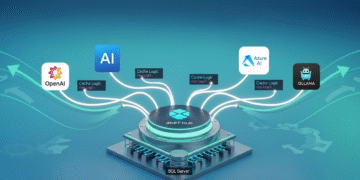
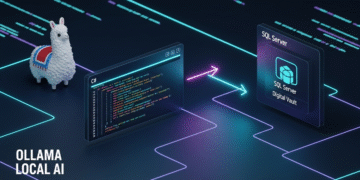

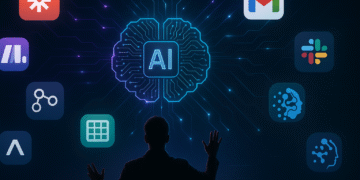









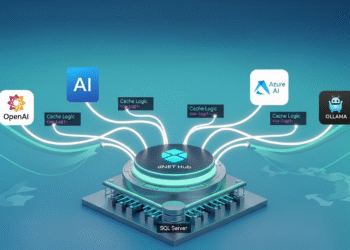
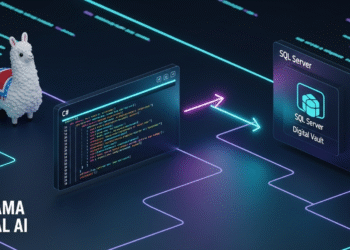







Comments 1